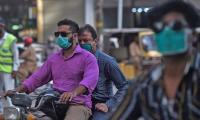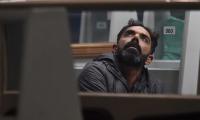The writer (she/her) is the technical adviser to the MoFEPT. Views are her own.
According to a 2015 news report in this paper, the Islamabad Capital Territory is home to 52 urban and suburban slums (‘katchi abadis’) out of which only 10, less than 20 percent, are officially recognised.
The population in these slums totalled a little over 100,000, a number which can only have gone up since then. According to CDA figures at the time, Punjabi Christians comprised roughly 35 percent, other Punjabi /Potohari groups around 26 percent, Pakhtuns around 20 percent, and Kashmiri/ Hazaras around 10 percent, respectively.
With Islamabad’s population at the time hovering around one million, that means 10 percent of the city’s population dwells in these slums. Their residents participate in the labour force that serves the city’s homes, businesses and local economy. The families living there tend to have more children per family – a higher population growth rate. Yet, come planning time for municipal and public services including schools, these communities are invisible.
The school-going children in these slums either attend mainstream schools in Islamabad-proper or community schools (some sponsored by the government, others run by non-profits or charitable organisations/ individuals) in the slums they live in. Although Pakistan has declared education a right, public schools often balk at admitting children from slums, for fear that their performance will depress the school’s average result in standardised tests, such as the ones at the end of grade 5. This is not surprising since these children receive less academic support from their homes. As a result, schools may expel many of these disadvantaged children before they reach grade-5 which is so critical to the school’s performance indicators. These children either join a local community school or drop out altogether.
Discrimination against ‘slum dwelling children’ is another factor which no one will openly admit to but one that I have clearly seen in conversations with many public-school teachers – insensitive comments like “these slum children bring their bad habits with them and affect other children”, “these slum children smoke and are more prone to drug use because their (Christian) parents don’t care.”
Besides access issues, I came across another issue at these community schools. Every single teacher that I interacted with said that their children found Urdu to be the most difficult subject. While this was to be expected in the katchi abadi with predominantly Pashto-speaking communities, I was surprised to hear the same from community teachers at schools with children whose families speak Urdu without effort. According to teachers, the primary level Urdu books are ‘very difficult’. They have challenging vocabulary and teach a lot of grammar that children do not understand. In Pashto-speaking communities, where few speak Urdu at home, this issue is even more acute. Even those children that can read do so without comprehension.
Every teacher I spoke to remarked that children have an easier time learning English and Math than Urdu. They may not achieve great feats, but they do better in assessments of these subjects. This raises several questions that a school system designed to solve learning challenges should address. The idea that English is the demand of the elite, whose own children opt for ‘easy Urdu’, whereas Urdu creates a level playing field, is actually not factual.
The myth that teaching all children in Urdu while introducing them to English as a foreign language will make them bilingual is an illusion. Even in a city like Islamabad, which boasts the highest literacy rate in the country, for these and many other children, Urdu is (almost) as much a foreign language as English. Being bilingual means being fluent in two languages, usually by being immersed in both. Here, however, a lot of children are being schooled in two languages they do not know how to read or write, and neither of which is their mother tongue.
Whether the current Urdu books are inappropriate for children in certain communities or age inappropriate across the board is a question that needs investigation. Whichever it may be, at the end of the day it just validates what good educators have known all along: that you cannot use one language and one book for all children across different communities. Different communities can have very different needs and their curriculum should reflect that.
The policymaking elites have never set foot in such slums and have no idea that, by virtue of being unplanned, the schools in these slums cannot get an electricity connection for as much as a lightbulb or a fan. We should not, and cannot, expect the elite to solve problems for people living lives they have never known and cannot imagine.
Children in early school years do not only learn Urdu, Math, English, Social Studies, General Knowledge, Science, and Islamiat but, more fundamentally, learn how to learn in the classroom, from their books and in their homes. Assuming that every child that walks into school already knows Urdu from home is a fallacy. Taking a slower start and teaching Urdu like a second language might help. Nevertheless, I acknowledge that living in any part of Pakistan, with its Urdu language news and entertainment channels, does provide a certain degree of immersion in Urdu.
If we could do a better job at teaching Urdu in early grades it may be possible to transition to Urdu as a medium of instruction in later grades. But in the early years at least, conducting schooling in a language the child is ill at ease with (be it English, Urdu, or any other language) puts up a barrier to learning. For many young children who are only fluent in their regional mother tongue, merely replacing English with Urdu at school can (almost) be like replacing one colonial language with another.
Beyond learning, this long-running project of forging a single national identity by foisting Urdu on every child comes at the cost of a loss of identity and a disconnection from local indigenous culture. I have often seen children and youth at a loss to adequately express themselves in classrooms. Schooling in a ‘foreign’ language may bring about an awkward, artificial uniformity but it also suppresses (even extinguishes) bonds with local communities, family traditions and history.
In a country where we have up to three or four different local languages in a single district, even uniformity at the provincial level is inadequate. Consider that there are significant segments and regions in this country that speak Punjabi, Sindhi, Pushto, Balochi, Saraiki, Gujari, Brahui, Shina, Kashmiri in addition to a number of others each spoken by millions. The acknowledgement of this diversity needs to go beyond lip service and must be seen reflected in the curriculum.
The bottom line is: English is not the only language school children struggle with. Replacing it with Urdu does not solve our learning poverty problems. Children need to learn to learn (in their mother tongue) before they can graduate to learning in other languages. Teaching children Urdu and English remains imperative because both allow the speaker geographic mobility and, therefore, access to greater opportunities which provides upward social mobility, and the stuff great nations are built on – hope that this is still a country where our children can have better and more prosperous lives than we did.
FAO recognises home gardening as crucial strategy to enhance household food security and nutrition, particularly in...
Pakistan’s judicial system has evolved in a complex manner since country’s inception
Understanding between PML-N and PPP to unite despite their differences is one bright spot
Mushroom growth of housing societies has claimed tens of thousands of acres or possibly millions of acres over decade
These slogans often become symbolic rather than transformative, serving as reminders of unfulfilled promises
Tulsi Gabbard, incoming DNI is seasoned military leader who completed Officer Candidate School at Alabama Military...







